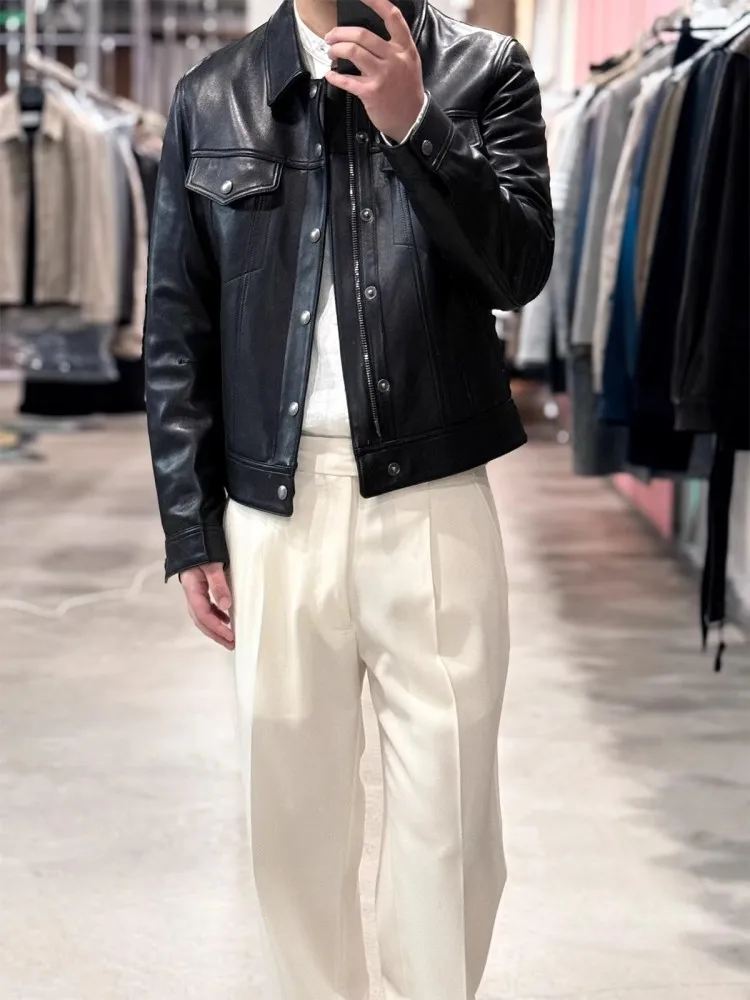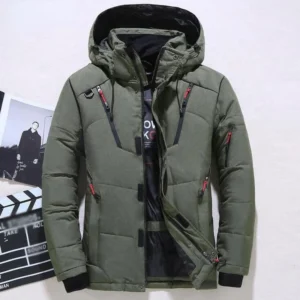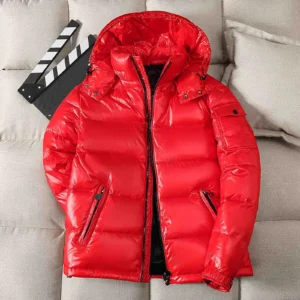Understanding the “Full Coat” Concept for Men
A full coat represents a significant investment in any man’s wardrobe, serving as both a functional necessity and a style statement. But what exactly qualifies as a “full coat”? Generally speaking, a full coat is any long outerwear garment that extends below the hip, providing substantial coverage against the elements.
The world of men’s full coats encompasses several distinct styles:
- Overcoats and topcoats: Formal outerwear designed to be worn over suits and business attire
- Trench coats: Versatile rainwear with military origins and distinctive features
- Winter parkas: Insulated coats designed primarily for cold-weather protection
- Classic styles: Chesterfield (formal with velvet collar), Ulster (with cape-like shoulder covering), and Polo coats (luxurious camel-colored styles)
Historically, men’s coat lengths have evolved significantly. In the Victorian era, full-length coats extending to the ankle were common. Through the 20th century, hemlines gradually rose, with mid-thigh to knee-length becoming standard by the 1950s. Today’s options range from hip to ankle length, with proper coat length fundamentals balancing tradition with contemporary style.
Finding the right length isn’t merely aesthetic—it directly impacts functionality, proportions, and overall appearance. The perfect men’s overcoat strikes a balance between protection, movement, and visual harmony with your body type.
Why Proper Coat Length Matters for Your Style
The length of your coat dramatically influences your overall appearance in ways many men overlook. A coat that hits at the right point creates visual balance and proportion, making even an average outfit appear more refined and intentional.
Visual Impact and Silhouette
Your coat length directly affects your perceived proportions. Too long, and you might appear shorter or overwhelmed by fabric; too short, and the coat loses its essential character while potentially creating awkward proportions with your legs. The right length creates a balanced silhouette that enhances your natural build.
Practical Functionality
Beyond appearances, length serves functional purposes. Longer coats provide greater protection from cold winds and precipitation but may restrict movement. Shorter styles offer improved mobility but less coverage. Surprisingly, longer doesn’t automatically mean warmer—insulation quality and construction matter more than a few extra inches of fabric.
Appropriate Style Expression
Different coat lengths convey distinct impressions. Knee-length overcoats project formality and timelessness, while shorter styles like pea coats communicate a more casual, contemporary attitude. Understanding these associations helps ensure your proper coat length for men aligns with your intended style message.
Many men mistakenly believe that coat length is purely a matter of personal preference, when in fact it should be informed by your body proportions, intended use, and the specific coat style. The right long overcoat can transform your winter appearance when chosen with these principles in mind.
The Primary Factors That Determine Your Ideal Coat Length
Height Considerations: Finding Your Proportional Sweet Spot
Your height is perhaps the most significant factor in determining your ideal coat length. The goal is to find a proportion that complements your natural stature rather than working against it.
For shorter men (under 5‘8” or 173 cm):
– Avoid coats that extend beyond mid-thigh to prevent overwhelming your frame
– Look for hems that hit at or slightly above the knee
– Consider slightly shorter styles that create a lengthening effect for your legs
– Vertical details and slimmer cuts help enhance perceived height
For average height men (5‘8”-6‘0” or 173-183 cm):
– Most coat lengths work well, from just below hip to just below knee
– Classic knee-length overcoats provide ideal balance
– Mid-thigh lengths offer versatility for both formal and casual settings
– Consider your body proportions (leg length vs. torso) when making final decisions
For taller men (over 6‘0” or 183 cm):
– Longer styles that extend to the knee or below create balanced proportions
– Avoid coats that are too short, which can make arms and legs appear disproportionately long
– Mid-calf options can look particularly distinguished on taller frames
– Ensure sleeves are long enough to match the coat’s overall scale
Finding the perfect coat length for your height involves observing how the garment visually divides your body. Ideally, the coat should create the impression of legs that are approximately the same length as your upper body, even if your actual proportions differ. Shorter men in particular benefit from specialized coat length recommendations that create a more balanced appearance.
Your Body Type and Build: Beyond Just Height
While height provides a starting point, your specific body type significantly influences ideal coat length.
Athletic/V-shaped build:
– Mid-thigh to knee-length coats typically flatter an athletic frame
– Ensure sufficient room across shoulders without excessive fabric in the waist
– Slightly tapered silhouettes complement your natural proportions
– Consider how the coat’s closure system (buttons, belt) enhances or minimizes your V-shape
Heavier/rectangular build:
– Knee-length or slightly above creates vertical lines that slim the silhouette
– Single-breasted styles with minimal details reduce visual bulk
– Vertical seams and details draw the eye up and down rather than side to side
– Avoid extremely slim fits that can strain at closure points
Slim build:
– Both shorter and longer lengths can work well
– Consider slightly shorter styles to avoid appearing overwhelmed by fabric
– Double-breasted options can add substance to a slender frame
– Pay attention to shoulder fit—too wide will emphasize slimness
Shoulder width and chest measurement play crucial roles in coat proportions. A coat’s shoulders should align with your natural shoulder end-point, while providing enough chest room for comfort while accommodating layers underneath. Understanding your perfect coat length for every body type helps ensure the most flattering fit.
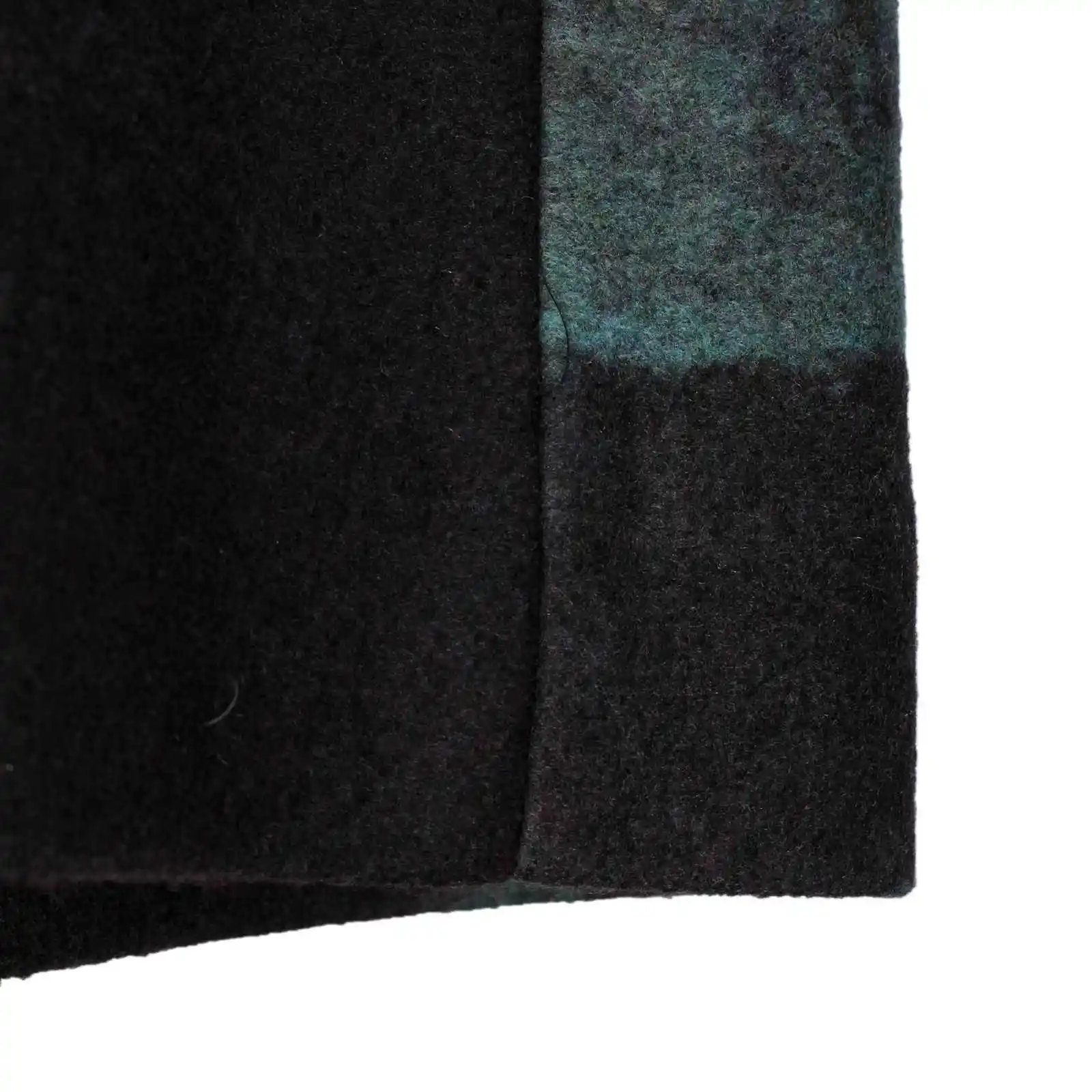
Functional Purpose: Matching Length to Occasion and Use
The contexts in which you’ll wear your coat should heavily influence length selection.
Business/formal wear:
– Longer coats (knee-length or below) traditionally pair with suits and formal attire
– Ensure the coat extends beyond your suit jacket by at least 1-2 inches
– Classic overcoats and topcoats in this length project professionalism
– Consider if you’ll primarily be walking, standing, or sitting while wearing it
Casual everyday use:
– Mid-thigh to just above knee offers versatile performance
– Shorter options provide better mobility for active lifestyles
– Consider comfort when getting in and out of vehicles
– Balance protection needs with freedom of movement
Performance and outdoor activities:
– Shorter styles (hip to mid-thigh) allow for increased range of motion
– Technical features become more important than traditional length rules
– Consider specific activities (hiking, commuting) when determining ideal length
For specialized needs, certain coat types have evolved with specific lengths—driving coats typically hit at mid-thigh to allow comfortable seating, while walking coats extend to the knee for greater protection. Browse our men’s dress coat collection for formal options or explore guides on choosing the perfect coat for extreme cold when function must take priority.
What You’ll Wear Underneath: The Layering Factor
The garments you plan to wear beneath your coat significantly impact the appropriate length and fit.
When wearing suits and blazers, your overcoat must extend beyond the jacket hem by at least 1-2 inches. A coat that’s shorter than your suit jacket creates an awkward, unbalanced appearance that immediately signals an improper fit.
For heavy sweaters and multiple layers, consider:
– Sizing up or choosing styles with more room in the chest and shoulders
– Slightly longer lengths that maintain proportion when worn over bulkier items
– How the coat hangs when fully buttoned over your thickest potential layers
When trying on coats, always test them with the type of clothing you’ll typically wear underneath. Button it completely, sit down, extend your arms forward, and move naturally. If you feel restriction or see strain at closure points, you may need a different size or cut.
Seasonal considerations also matter—winter coats often benefit from slightly longer lengths than transitional spring/fall options, providing additional protection when temperatures drop.
Specific Length Guidelines by Coat Type
Classic Overcoats and Topcoats: Traditional Elegance
Formal overcoats follow fairly established length conventions that have remained relatively consistent over decades.
Traditional overcoats typically range from just above the knee to mid-calf. The most versatile and widely accepted length hits at or just below the knee, providing sufficient coverage while maintaining mobility. This classic length works particularly well for:
- Formal business environments
- Evening events and formal occasions
- Traditional professional settings
Specific traditional styles have their own standard lengths:
– Chesterfield: Typically knee-length with a clean, minimalist appearance
– Guard’s Coat: Often slightly longer, extending below the knee
– Polo Coat: Usually knee-length with a slightly more relaxed character
Contemporary interpretations have introduced slightly shorter options, with some modern overcoats hitting at mid-thigh. These updated lengths maintain the coat’s formal character while offering a more current silhouette, particularly appealing to younger men.
For most men, a classic wool overcoat that extends to just above or at the knee provides the most versatile option, suitable for formal wear while remaining practical for daily use.
Trench Coats: Balancing Function and Form
The trench coat occupies a unique space in the menswear world, with a fairly standardized traditional length that balances practicality with style.
Classic trench coats typically hit just below the knee, allowing for:
– Comprehensive rain protection
– Easy movement when walking
– Proper drape of the distinctive flared skirt
– Visual balance with the characteristic double-breasted closure and belt
Modern variations include:
– Mid-thigh “short trench” styles for a more contemporary, urban look
– Longer options extending to mid-calf for maximum protection and dramatic effect
– Traditional knee-length designs that remain the most versatile choice
The right trench coat length should allow you to move comfortably while seated and standing. The belt should hit at your natural waistline, and the hem should create a balanced proportion with your height.
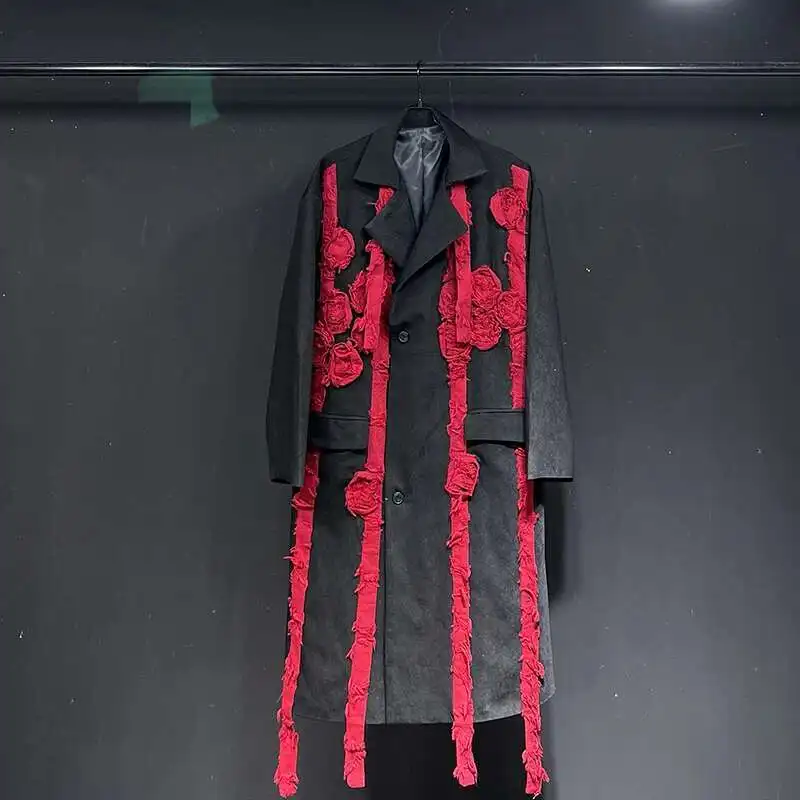
Winter Coats and Parkas: Prioritizing Protection
Cold-weather coats often follow different length guidelines, prioritizing functionality over traditional style rules.
For extreme cold environments:
– Longer lengths extending to mid-thigh or knee provide maximum protection
– Overlapping layers at hem prevent cold air entry
– Coverage of the seat area is essential for maintaining core warmth
For active winter wear:
– Shorter lengths (hip to mid-thigh) allow greater mobility
– Technical features like snow skirts and adjustable hems become important
– Consider activity level when determining ideal length
For transitional or milder winters:
– Mid-thigh lengths offer versatile protection without overheating
– Adjustable features allow adaptation to changing conditions
The relationship between insulation quality and length is important to understand. A shorter, technologically advanced coat with proper insulation may provide more warmth than a longer, poorly insulated option. Our guide to perfect winter coat length explores these considerations in detail, or browse our men’s winter coats to see various options.
Car Coats, Pea Coats and Duffle Coats: Shorter Options
These classic styles represent the shorter end of the “full coat” spectrum, with lengths that serve specific functional purposes.
Car coats traditionally hit at mid-thigh, allowing comfortable seating while driving while still providing substantial coverage when standing. Their appropriate length typically ranges from hip to just above the knee, making them versatile options for daily wear.
Pea coats feature a distinctive shorter length, typically ending at the hip or just below. This nautical-inspired design prioritizes freedom of movement while still providing substantial warmth through its dense wool construction and double-breasted closure.
Duffle coats generally extend to mid-thigh, with their toggle closures and hood creating a casual yet protective option. The slightly shorter length complements their sportier character.
These shorter styles tend to work particularly well for:
– Men with shorter stature who might be overwhelmed by longer coats
– Casual and smart-casual environments
– Active lifestyles requiring greater mobility
– Creating a more youthful, contemporary appearance
How to Measure and Evaluate Coat Length on Yourself
Finding your ideal coat length involves more than following generic guidelines. These practical techniques help you determine the most flattering length for your unique proportions:
Use body landmarks as reference points
– Place your hands at your sides naturally
– The coat hem should fall somewhere between your knuckles and mid-thigh for shorter styles
– Knee-length coats should hit at or just below your kneecap
– Longer styles can extend to mid-calf but rarely beyondPerform the “seat coverage” test for overcoats
– Formal overcoats should fully cover your suit jacket and the seat of your pants
– Check for complete coverage when standing naturally
– Ensure the back vent(s) lay flat without pullingConduct the mobility assessment
– Sit down while wearing the buttoned coat
– Raise your arms forward and to the sides
– Climb several stairs or take long strides
– The coat should allow these movements without significant restrictionEvaluate with the “mirror test”
– Stand 6-8 feet from a full-length mirror
– Observe the overall proportion of coat to visible leg
– For balanced proportions, your legs should appear approximately equal in length to your coated upper bodyCheck sleeve-to-hem relationship
– Sleeve length and coat length should appear proportional
– Typically, longer coats pair with slightly longer sleeves
– Short sleeves on a long coat create awkward proportions
Comparing short vs. long coats directly while trying them on often provides the clearest visual understanding of what works best for your body type.
Essential Visual Cues for Perfect Coat Length
Training your eye to recognize proper coat length is an essential skill for making confident purchasing decisions. Look for these visual indicators:
• Leg-to-coat ratio: Ideally, your visible legs below the coat should appear approximately equal to or slightly longer than the coated portion of your body, creating balanced proportions
• Horizontal cutting line: The hem creates a horizontal line across your body—this line should hit at a flattering point (typically narrower areas like just above/below knee) rather than at the widest part of your calves
• Closure placement: Button stance and where the coat closes should complement the length—shorter coats generally have higher button placement
• Visual weight distribution: The coat should appear balanced, without seeming top or bottom-heavy
Common mistakes that create unflattering appearances include:
– Coats that end at the widest part of the calf, creating an unbalanced silhouette
– Excessively long styles that overwhelm smaller frames
– Coats so short they fail to cover a suit jacket or the seat
– Disproportionate lengths that visually “cut” the body at awkward points
Mens Heavy Winter Coat, Mens Insulated Coat, Mens Parka Coat
Price range: $175.52 through $237.36 Select options This product has multiple variants. The options may be chosen on the product pageMens Big and Tall Winter Coats, Mens Down Coat, Mens Hooded Winter Coat, Mens Puffer Coat
Price range: $126.44 through $217.01 Select options This product has multiple variants. The options may be chosen on the product pageMens Big and Tall Winter Coats, Mens Hooded Winter Coat
Price range: $80.32 through $106.68 Select options This product has multiple variants. The options may be chosen on the product pageMens Cashmere Overcoat, Mens Hooded Winter Coat, Mens Wool Blend Coat
Price range: $128.72 through $139.68 Select options This product has multiple variants. The options may be chosen on the product pageMens Hooded Winter Coat, Mens Insulated Coat, Mens Puffer Coat, Mens Quilted Coat
Price range: $139.88 through $177.72 Select options This product has multiple variants. The options may be chosen on the product pageMens Black Overcoat, Mens Black Wool Coat, Mens Wool Overcoat
$339.18 Select options This product has multiple variants. The options may be chosen on the product page

When a Tailor Can Help (and When They Can’t)
Understanding the possibilities and limitations of tailoring can save significant time and money when purchasing a coat.
A skilled tailor can typically:
– Shorten a coat by 1-3 inches without affecting proportions
– Adjust sleeve length for proper proportion
– Make minor adjustments to shoulders and chest (within limits)
– Modify button placement to optimize the coat’s line
However, certain alterations are either impractical or prohibitively expensive:
– Significantly lengthening a coat (limited by fabric availability)
– Dramatically narrowing shoulders (affects the coat’s entire structure)
– Completely restructuring the silhouette
– Altering complex design features like vents and collars
When considering alterations, expect:
– Basic hem shortening: $50-100
– Sleeve alterations: $40-80
– More complex structural changes: $100-200+
Signs a coat is fundamentally the wrong length (and not worth altering):
– The proportions look drastically imbalanced
– Design features like pockets, vents, or belts would need repositioning
– The coat’s overall style depends on its current length
Supplemental Content: Frequently Asked Questions About Coat Length
Can I Wear a Full-Length Coat If I’m Short?
Absolutely! The key is understanding how to make longer coats work for your proportions. While conventional wisdom suggests shorter men should avoid long coats, this oversimplification ignores how the right cut and styling can create a flattering silhouette.
For shorter men, focus on:
– Selecting slimmer cuts that don’t overwhelm your frame
– Ensuring proper shoulder fit (no drop shoulders)
– Opting for single-breasted styles that create a cleaner line
– Looking for vertical details that draw the eye up and down
The right coat can actually make you appear taller when properly fitted. Discover specific techniques for using coat length to enhance height that work with your natural proportions rather than against them.
Are Longer Coats Always More Formal?
While longer coats traditionally signal greater formality, this relationship isn’t absolute. The formality of a coat depends on multiple factors beyond just its length:
Material plays a crucial role—a knee-length coat in a casual fabric like waxed cotton appears less formal than a shorter coat in fine worsted wool. Construction details significantly impact perceived formality, with structured shoulders, clean lines, and minimal detailing reading as more formal regardless of length.
Examples that break the typical formality rules include casual ankle-length duster coats (long but informal) and structured short peacoats (shorter but potentially formal). Contemporary fashion increasingly blurs these traditional distinctions, allowing for greater flexibility in interpreting length-to-formality relationships.
How Have Coat Length Trends Changed Over Time?
Men’s coat lengths have undergone fascinating evolution throughout fashion history. In the Victorian and Edwardian eras, full-length coats extending below the knee were standard for gentlemen. The 1920s-1930s maintained this formality, with overcoats typically reaching mid-calf.
Post-WWII, practicality led to shorter styles gaining popularity, with knee-length becoming standard by the 1950s. The 1960s-1970s saw further shortening, with many styles hitting mid-thigh. The 1980s briefly revived longer silhouettes before the minimalist 1990s favored hip to thigh-length options.
Today’s market shows remarkable diversity, with everything from cropped styles to below-knee options available. Current trends favor versatile knee-length overcoats for formal wear, while casual coats continue to embrace shorter, more practical lengths. The men’s coat length style guide explores these historical patterns in greater detail.
Making Your Final Decision: Confidence Trumps Rules
While this guide provides comprehensive guidelines for determining ideal coat length, remember that personal confidence ultimately determines how well any garment works for you. The “perfect” length according to traditional rules might not feel right for your unique style, body, or lifestyle.
The most important factors to balance when making your decision include:
– Your height and build
– Primary intended use and occasions
– What you’ll typically wear underneath
– Your personal comfort and confidence
Feel free to experiment within these guidelines. A slightly shorter or longer coat than traditionally recommended might perfectly suit your individual style expression. The best coat length is ultimately one that makes you feel comfortable, confident, and appropriately dressed for your needs.
When evaluating options, trust your eye and how the coat makes you feel. The right full coat becomes a signature piece in your wardrobe—one that protects you from the elements while enhancing your personal style for years to come.

